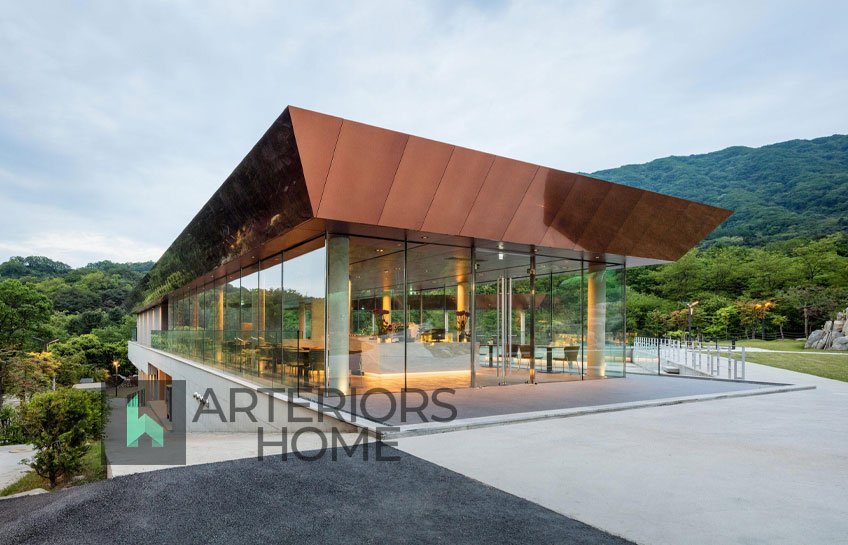Interior design does not exist in isolation. The architectural envelope of a building plays a important role in shaping the interior environment. The style, layout, and construction of the architecture informs nearly all design decisions related to furnishing and decorating the interior spaces. An understanding of architectural movements and types is therefore essential for interior designers seeking to create unified environments aligned with the external structure.
This article explores the interplay between architecture and interior design – how various architectural styles influence interior spaces and how the two disciplines work synergistically.
Introduction
Architecture refers to the art and science behind planning, designing, and constructing buildings and other physical structures. It involves both an aesthetic vision as well as technical knowledge around materials, engineering, and construction methods. The output of architecture shapes our lived experience – it provides shelter, defines community spaces, and even influences our moods and behaviors.
There are three overarching types of architecture that have distinct implications on interiors:
- Traditional architecture draws from historical design styles and long-standing regional construction techniques.
- Modern architecture is based on simplifying forms and embracing innovative materials and building technologies.
- Contemporary architecture focuses on current design philosophies and forward-thinking concepts. Consider checking what is contemporary art
Understanding this taxonomy of architectural styles informs interior design – whether the goal is preserving heritage, enabling functionality, or making an artistic statement. The interplay between architecture and interiors is dynamic and an intrinsic consideration for interior designers.
Historical Perspective
Architectural styles have evolved dramatically over human history in tandem with technological advances, cultural influences, and environmental context. From primitive huts built from mud and grass to monumental glass skyscrapers, architecture has come to encompass a diverse range of schools and movements.
Key Epochs in Architectural History
- Ancient era – Characterized by monumental stone architecture intended to inspire awe – eg. Egyptian pyramids, Greek and Roman temples
- Classical era – Marked by order, symmetry, proportions – eg. Parthenon, Pantheon, Colosseum
- Medieval era – Dominated by religious structures with soaring interiors, flying buttresses, pointed arches – eg. Gothic cathedrals
- Renaissance – Return to Classical ideals, monumental domes, mathematical precision – eg. Florence Cathedral dome
- Baroque – Elaborate ornamentation, curving forms, grandiose designs – eg. Palace of Versailles
- Industrial Revolution – New building materials like iron and glass enable large covered spaces – eg. Crystal Palace
- Modernism – Abstraction, “form follows function”, expressive minimalism – eg. Bauhaus, Fallingwater
This abbreviated historical overview charts some of the seminal moments that spawned new and influential architectural schools. Changing values, aspirations, constraints, and possibilities led to innovation in the built environment.
Many older architectural styles directly inform traditional interior design even today. Movements like postmodernism and critical regionalism also compel us to reexamine historical models. Thus the story of architecture is one of constant evolution threaded together by certain persistent ideals that transcend the ages.
Traditional Architecture
Elements and Attributes
Traditional architecture is grounded in customs, time-honored designs, and established construction methods often distinctive to a particular country or region. Some typical attributes include:
- Decorative motifs and ornamentation
- Natural materials like stone, wood, clay
- Intensive handcraftsmanship and artisanal details
- Adherence to proportional ideals like the golden ratio
- Vernacular methods passed down over generations
Regional versions share an allegiance to historical precedents – for example, Alpine chalets have steep sloping roofs to deal with heavy snow while Mediterranean homes have centralized courtyards to manage hot climates.
Cultural Flavors
Every culture across the world has nurtured its own vibrant flavors of traditional building styles tuned to local conditions. For example:
- Japanese tearooms exude tranquil minimalism with clean lines, natural materials, and deliberate, uncluttered spaces
- Moroccan riads centered around a courtyard with rooms on two or more floors, inward-facing windows, tiling and mosaics
- Thai houses raised on stilts featuring steep A-frame roofs with large overhanging eaves and multi-tiered spaces
Such culturally symbolic architecture creates corresponding expectations about interior environments – whether it is sitting on floor cushions in a Japanese home or lounging upon richly patterned textiles in a Moroccan riad.
Traditional architecture styles exemplifying cultural diversity (Japanese, Moroccan, Balinese, Thai, Ottoman)
Impact on Interiors
Traditional architecture casts long shadows on interior design decisions in heritage spaces. Key implications include:
Ornamentation – Elaborate exterior relief work needs to carry into the interior schemes – whether through fabric patterns, texture contrasts, carved woods, or color palettes emulating stained glass.
Authenticity – Design elements and furnishings should align with the cultural lineage of the architecture using local artifacts, handicrafts, textiles, artworks, and bespoke detailing.
Harmony – The interior design should seamlessly blend with the traditional shell through harmonious proportions, materials, sightlines, and ambience.
When done effectively, traditional interior design becomes an extension of the external architecture – preserving regional heritage while adapting to modern functional needs.
Modern Architecture
Modern architecture is a break from past models – it embraces new ways of thinking about form, function, beauty, and meaning in built spaces.
Tenets and Ideology
Some core tenets of modern architecture include:
- Minimalism – Pare down to essentials, avoid unnecessary ornamentation
- Abstraction – Distill the form and geometry to express the essence
- Truth to materials – Showcase innate beauty of materials like glass, steel, concrete
- Functionalism – Design spaces based on purpose and human needs
- Open plan – Create free-flowing, light filled interiors with fewer divisions
- Industrial aesthetics – Incorporate raw textures, structural elements, mechanical aspects
Many seminal modern architects and movements like Le Corbusier, Mies van der Rohe, Frank Lloyd Wright, De Stijl, and Bauhaus championed these principles starting in the early 20th century. They created a radically novel architecture that shaped the physical realities and consciousness of the modern world.
Bauhaus building in Dessau, Germany designed by Walter Gropius in 1926 exemplifying modernist “form follows function” philosophy with its sleek workshop aesthetic suited for an arts and design school
Translation into Interiors
Modernist interiors complement the clean lines and functional focus of the external architecture:
Form Minimalism – Visually calm interiors with sparse, geometric furnishings placed carefully within the space
Material Honesty – Natural wood, steel, and masonry feature prominently rather than wallpapers or ornamental moldings
Purposeful Design – Every object plays a role aligned with the functional zones instead of decorative clutter
Light and Space – Full-height glazing and open plans optimize natural light, sightlines, and airflow
The industrially infused modern interior interprets the architecture into a humane landscape for living by bringing texture, warmth, and livability without compromising the core vision.
Contemporary Architecture
Contemporary architecture refers to what is happening right now – today’s design philosophies applied to current built environments. It builds upon the legacy of modernism while incorporating cutting-edge materials, technologies, and thinking around meaning and sustainability.
Hallmarks of Contemporary Style
While contemporary architects have diverse visions, we can recognize some common threads:
- Bold geometric forms – cubes, polygons, diagonal planes
- Contrasts – Tactile natural materials mixed with sleek metals and glass
- Green principles – Passive solar, renewable materials, energy-efficiency
- High-tech capabilities – Complex structural engineering, adaptive skins
- Experiential richness – Movement, light, shadow amplified
Today’s digital design capabilities, advanced construction methods, and paradigm-shifting building performance goals all push contemporary architecture into new territory.
The Metropol Parasol by Jürgen Mayer H in Seville, Spain demonstrates contemporary architecture ideals with its bold geometric timber lattice forming an undulating parasol over this public square
Imprint on Interiors
Contemporary interiors tend to mirror the more adventurous architecture with:
Dynamic Angles – Inclined planes, unconventional layouts disconnected from external structure
Sculptural Statements – Custom furnishings like cantilevered sofas or digitally crafted lighting installations
Organic Textures – Natural stone walls, textural rugs, roughly finished woods counter sleek surfaces
Technological Integration – Smart home systems, touch screens, integrated mechanical elements
Like the architecture, contemporary interiors reject straight lines and boxy forms in favor of fluid, experiential environments enriched by interplay of materials and lighting.
Interplay In Practice
So far we have surveyed how traditional, modern, and contemporary architectural styles relate conceptually to interior design decisions. Now we will examine some concrete examples that demonstrate this interplay between shells and interiors across different projects.
Traditional Home Restoration
This 19th century Victorian home retains its original interior wall moldings, paneled wainscoting, marble fireplace mantels, and a spectacular 4-story open staircase under a stained glass dome. The preservation-centered redesign harmonizes with these existing traditional details.
Exterior – Red brick facade with gabled slate roofline, multi-pane arched windows, decorative trim
Interior – Color scheme inspired by original finishes, period appropriate fixtures and furnishings like clawfoot tub, chaise lounge, ornate area rugs layered over hardwood floors
Respectful restoration of a traditional Victorian home celebrating its character-defining architectural elements
Corporate Headquarters Renovation
The reimagining of this 1950s office building calls for a complete interior overhaul to create a light-filled, loft-like work environment while retaining parts of the existing modernist structure.
Exterior – Concrete geometric volumes, ribbon windows with louvred shades, flat roofline
Interior – Exposing structural brick walls, polished concrete floors, suspended cable lighting, blonde wood built-ins echoing midcentury detailing
Modern interior renovation of mid 20th century building maintaining connection with existing architectural framework
Contemporary Addition
This new contemporary annex features an undulating facade made from recombining triangles carved out of the original volume. Inside, the surprising shapes inform the bespoke interior finishes and furnishings.
Exterior – Deconstructed geometry in glass, weathered steel panels, grey terrazzo floors
Interior – Curvaceous built-in couches, light scoop illuminating a green wall, rippled glass divider filtering views
Contemporary interlayer addition with fragmented geometric forms mirrored by fluid customized interiors accommodating organic shapes
These examples showcase the critical dialogue between architecture and interiors across diverse styles, eras and functions.
Future Outlook
Architectural and interior design will continue advancing in tandem, collaborating to create better environments for human flourishing.
Sustainability
With climate urgency, sustainable architecture using renewable, non-toxic materials and integrating passive energy solutions will become standard. The interior design must uphold these ideals through mindful material selections, emphasis on natural daylighting, and support for indoor air quality and temperature modulation.
Sustainable architecture example: The MOSO Bamboo Pavilion constructed from fast-growing bamboo demonstrating green materials and innovative structural design
Technology
Digital design tools open radical new formal possibilities in modeling complex curves and structural gymnastics. Technical materials like ethylene tetrafluoroethylene (ETFE), aerogel, and carbon fiber translate these shapes into reality. The attendant interiors will need flexible systems and forms echoing this complexity. We may also see smart home ecosystems and augmented or virtual reality interfaces embedded unobtrusively.
Experience
Beyond fulfilling basic needs, tomorrow’s most thoughtful architecture considers emotional and sensorial impact through modulation of light, views, enclosure, and circulation. Attuned interiors pick up these experiential cues – using texture, color, lighting, sightlines and soundscapes to choreograph personal journeys.
While forward-looking, next generation architecture stays grounded in the timeless insight that thoughtfully designed physical space shapes quality of being. Interiors breathe life into these structures.
Conclusion
We have explored the inextricable connection between architecture and interiors – a dialogue that has played out over millennia yet feels as contemporary as today. Traditional styles laid the foundation and retain relevance in grounding us with cultural resonance. Modernism radically expanded the formal vocabulary. Contemporary architecture pursues uncharted terrain with advanced tools. Through it all, interiors remain the essential interpreter that translates architectural vision into livable human habitat.
Looking ahead, priorities like sustainability and human-centric design will ensure architecture continues serving needs beyond the purely functional. As long as we build thoughtfully to uplift the human spirit, the fusion of envelopes and interiors hidden within will endure as profound contributors to our wellbeing.




No Comment! Be the first one.